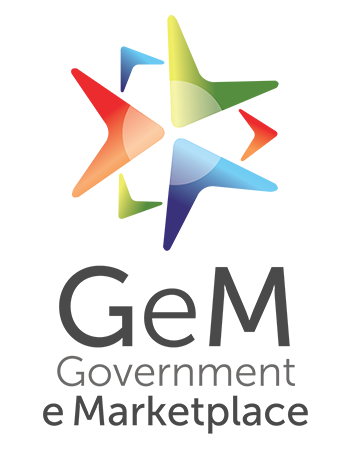In the digital era, where the internet and mobile devices are the mainstays, online patient management and automation of work processes in medical facilities are no longer an imagination. Undoubtedly, rapid technological changes have also revolutionized the way the healthcare sector functions. It has become more advanced and widespread.
Further, the pandemic of 2020 gave an instant boost to the sector to migrate their healthcare services from offline to online. This was when mHealth app development came into the radar, and its significance was realized was most. Simultaneously, the search for good and experienced mobile app development companies started as the mobile market for mHealth apps skyrocketed to $53 billion by the end of 2021.
Table of contents:
What is a mHealth app?
mHealth app is the abbreviation for Mobile health application. Healthcare applications are developed to help patients, healthcare professionals, and others associated with the medical sector. It offers patients the convenience of checking their health conditions from their mobile devices and also getting online treatment from reputed doctors in the comfort of their homes. Doctors and nurses, with the help of telehealth apps, can treat patients remotely from far away locations without requiring them to visit physically.
Mhealth apps, with their exceptional performance, improve the accessibility of medical care and treatment. The quality of healthcare services also increases as mHealth apps automate tasks, reduce the manual workload of medical staff, and help them focus on treating patients. Their efficiency improves, and hence, the quality of services becomes better.

Types of mHealth Apps
Regardless of everything, building custom mHealth apps requires special efforts from the developer’s end considering the complex nature of the app. mHealth apps are of three types –
1. Apps for patients – Apps that are meant for tracking the fitness and health status of patients fall under this category. Apps for women’s health management, disease management, nutrition & diet plans also belong to the segment of apps for patients. In the busy humdrum of daily life, most of us forget to take care of our health, track daily calorie intake, and check vitals. In such a scenario, mobile applications give them the comfort of managing their health with just a few clicks.
2. Apps for healthcare professionals – Apps built for doctors are mainly for the purpose of attending the patients online via video calls, listening to their health concerns, and diagnosing treatment for the same. Healthcare apps for doctors are very much helpful during extreme emergencies and pandemic-like conditions when it becomes impossible for the sick person to personally go and visit the doctor.
3. Apps for staff in the medical administration – All the apps that streamline the work process of healthcare service providers fall under this type. Online pharmacy apps, apps for pathological labs, and hospital staff management apps are a few examples.
Hence, depending on the type of users you want to create your app for, the features are integrated, and likewise, the cost is estimated.
mHealth App Development Process: 9 Step-by-Step Process
Step 1: Define your app’s target audience
The first and foremost step in an app development process is defining the audience for who you are building the mHealth app. Since you have landed on this page and reading this, chances are that you have already completed this step. As already discussed in the earlier section of this article, a healthcare app can be for three kinds of users – patients, doctors/nurses, and hospital administration.
After identifying your target market, the next thing you need to do is gain industry-specific insights to understand their pain points and how you can solve their problems with a user-friendly app. Your app or mobile solution must be created, keeping the following points in mind.
- Who is your customer or the app’s intended user?
- What is the key purpose of your app?
- Will they interact or just access information?
- What is the unique distinguishing factor of your app?
- What is the scope of potential outreach of the app?
After you have got answers to these questions, you can classify your app audience among the four groups –
- Doctors, surgeons, nurses, and other medical professionals
- Patients and general users
- Pharma Professionals
- Healthcare Administration
Step 2: Investigate the project area
Sometimes the best solution to know the scope of your project and how it satisfies the user’s intent is by creating a prototype of your app. It is a sample version of your final app with minimal features and functionalities.
It is almost identical to the final app and has clickable screens, which help the users to understand the usability of the app and its performance. Prototypes are used by A/B testing and help the developers to outline the project goals and assess whether the features are feasible on various operating systems.
Nowadays, various easy-to-use interactive tools for fast prototype creation, such as Proto.io. Therefore, creating a mock version of your final app is no longer a difficult task. Also, the plus point of creating a prototype is it reduces the chances of encountering design flaws during development.
Step 3: Defining the Features
Needless to say, the features that need to be integrated are based on your app type. Selecting the app features at this stage becomes easy after you have defined your target audience and set your project goals. To stand out from the rest, you need to think out of the way. Integrating highly interactive and intriguing features would grab the attention of the audience and compel them to install and try out the app.
For users – a telehealth app must have the facility to book doctor appointments online, call, payment options, video chat, text chat, calls, etc. Another functionality in the patient’s app is monitoring vital signs such as blood pressure, glucose level, oxygen saturation level, body temperature, and calorie intake.
For healthcare professionals – On the contrary, if your app is for doctors, surgeons, and nurses, then the set of features will be completely different. Doctors should be able to check appointments, set reminders, access patients’ data or information, schedule video & telephone calls, chat via text, accept payments, and check patients’ feedback ( ratings and reviews).
For medicine buying and selling – Pharmacy apps have features similar to online shopping apps where customers can easily search for medicines, upload prescriptions, and place their orders. From the suppliers’ end, pharmacy apps need to be incorporated with features such as tracking orders, receiving payments, and managing deliveries. Geolocation is a must-have feature in pharmacy apps.
For hospital and medical administration – mHealth apps for the medical staff, pathological labs, and users at the administration level will have some integral functions like managing patients’ details, accessing reports, tracking employee attendance, and storing data.
Step 4: Choosing the App Platform
When you hire a mobile app development company to build your mHealth app, they will ask about your choice of platform. You need to decide whether you want to create an app for Android users or Apple users, or both, since operating systems vary from each other in terms of development framework, approval system, features, and app revenue.
Selecting the platform type also aids in estimating app development cost, memory options, security settings, library and widget selection. Both platforms have their own set of advantages and disadvantages. Hence, you need to do proper research on both platforms so as to provide your users with the best experience.
Android apps offer great flexibility and great scope for customization. In comparison, iOS app offers limited customization but is less prone to security threats and attacks compared to Android apps. The approval system and app guidelines, and policy are more stringent in iOS systems.
Step 5: Selecting Technology Stack
The mobile app frameworks and tech stack used by your outsourced health app development company is a vital step. The knowledge and skill of the app developers in utilizing the latest technologies and trending tools determines the quality of your final app.
Tech stack allows the development team to build an app by integrating the features and functionalities as per your business requirement. Since the primary objective of your health app is to either increase accessibility to healthcare services for patients or to help improvise the health and medical system by delivering mobile technology solutions. Hence, a wrong selection of technology can lead to disastrous results and make your app a huge failure. A successful development of a mobile health application requires developers to have knowledge about the technologies such as Oracle, MySQL, MongoDB, Memcached, PostgreSQL, etc.
Step 6: Overview of the security risks
The medical sector runs on various state regulations and work processes here and must adhere to strict guidelines and policies of the healthcare authorities, such as HIPAA, GDPR, and EHR standards. So, when you are launching an app, you must ensure that it is compliant with the state rules.
You must be secure enough to protect the users from data breaches and security losses. The users should feel safe while using your app. Patient information is very sensitive, and hence, enhancing the user’s data security is a fundamental process of app development.
Step 7: Identify the challenges
Optimizing your user’s experience in the mHealth app is necessary to ensure that your app sells in the market. If users do not find your app user-friendly and face difficulty in navigation, app text size, and font, then chances are high that they will uninstall it straight away.
The main challenges the app developers need to look after are our API and third-party integrations, data security, user information privacy, and compliance with healthcare legislation. In addition to this, you need to check for technical errors and other shortcomings.
Overcoming these challenges and shortcomings will help you to scale your app and make it popular among users in the healthcare sector. Focusing on user convenience, performance, and app usability helps you to earn the trust of your app users.
Read Also: How Will Blockchain Change The Mobile App Development World?
Step 8: Estimate the app cost
The app features, scope, complexity, and platform determine the app’s cost. Also, mHealth apps for patients need to be integrated with wearable devices. The cost of app development varies significantly depending on the prototype, frameworks, and technologies used. Implementing high-end features like IoT, AI, ML, and chatbots can raise your app cost largely. Other factors that also play a detrimental role in deciding the cost of your app are engineering, design, app quality testing, and ongoing support/maintenance.
Therefore, it is always better to specify your budget to your selected agency before you hire dedicated developers for your app development. Your budget determines the feasibility of your mobile solutions and proceeds accordingly with the development.
Step 9: Hire an app development agency
The final step to ensure the successful development and deployment of your healthcare app is hiring a trusted health app development company. It is always wise to go for the one that has many years of experience in developing applications for various users to satisfy their diverse requirements.
Healthcare app development services by Webgen Technologies include building stellar apps for remote patient monitoring, fitness tracking app, mental health app, IoT solutions, AI-powered mHealth apps, and enterprise-level mobile solutions. If you are in need of any of these services, feel free to connect with our app development team.
Final Words
No wonder mobile health applications will significantly impact the way the healthcare ecosystem functions. Patients now have remote and easy access to medical treatment and care. They can also get their medicines delivered to their doorstep with a few simple clicks. Telehealth apps have enhanced the communication between patients and doctors. mHealth apps promote remote services and encourage healthcare facilities to adapt to remote patient treatment.
The introduction of healthcare apps is remarkably transforming the healthcare sector with artificial intelligence, IoT, machine learning, and smart application development. Easy diagnosis, quick treatment, and hassle-free management of medical records are some of the outstanding benefits of our mobile health application.







